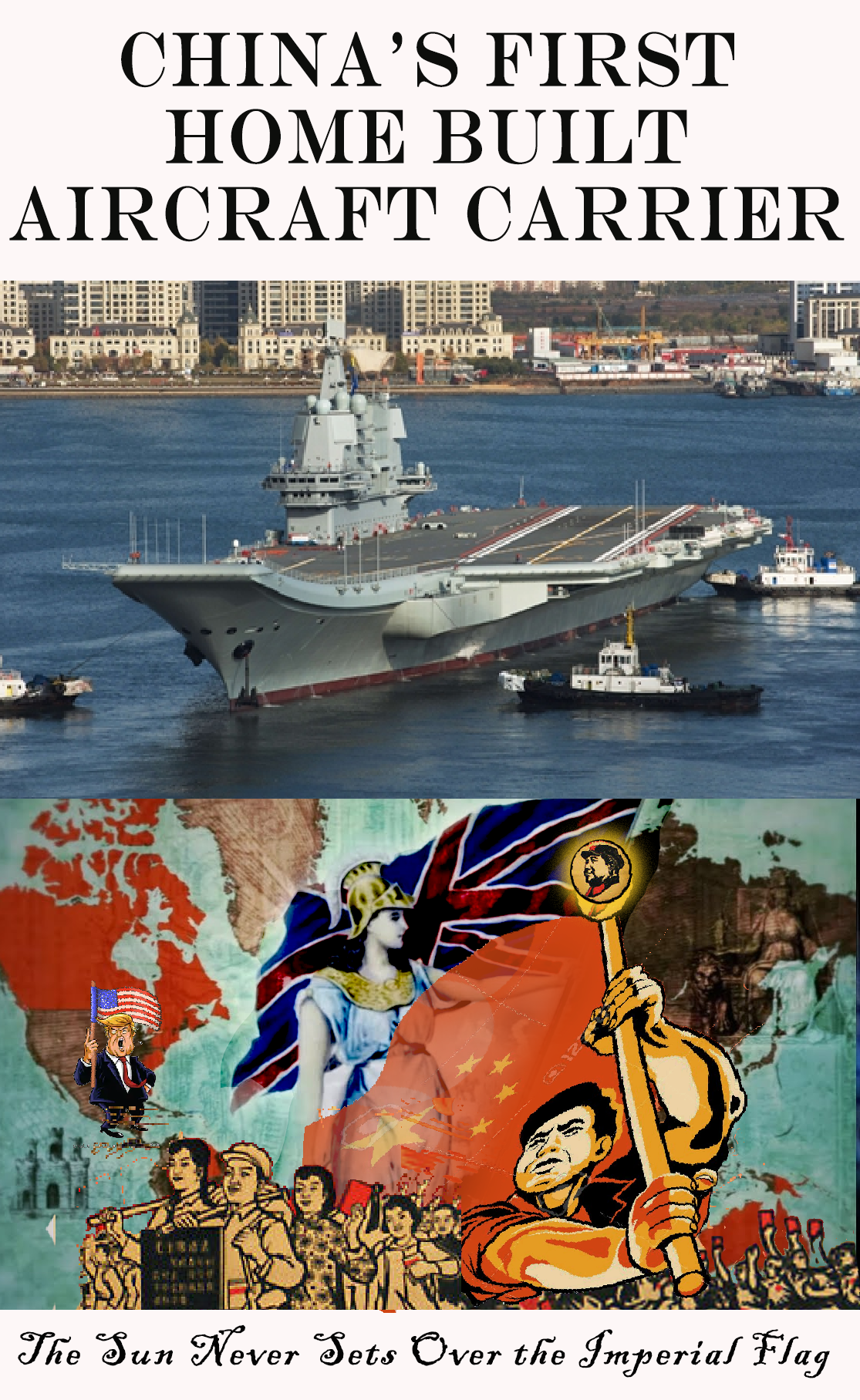 The huge question is what will China use this for? Aircraft carriers are not defensive. They are for the projection of power. My thought?
The huge question is what will China use this for? Aircraft carriers are not defensive. They are for the projection of power. My thought?
STATION IT IN CUBA!
As China emerges as a superpower, the errors of the Trump era seem to be preparing the way for China to replace the US as the world cop.
This is very much a departure from long-standing policies under Mao and Deng that said China’s military power should focus on internal affairs or limited to neighboring territories.
Aircraft carriers do not fit that mold. The US, with its eleven carriers, sees each carrier as the nidus of a fleet that dominates the seas. US carrier groups control the airspace of much of the world.super
Military observers expect the commissioning soon of China’s first home-built aircraft carrier, prosaically named the Type 001A for now. The as yet unnamed mistress of the seas, is intended at first to to fly the Chengdu J-15 fighter jet The J-15 is an unimpressice Chinese ripoff ofRissia’s SU-33. Liuke the SU-33, The J-15 is too heavy to operate efficiently from carriers, has problems with its flight control systems, which has led to several crashes. Russia own (an its last) Aircarfat Carrier can no fly the SU-33. The comparison is not America’s state of the art F-35 but The US tavy’s F-18 workhorse and that now old airplane weighs 14.5 tons while the J-15 is estimated to weigh 17.5 tons.
The more impressive carrier plane wouold be China’s hme built new Chengdu J-20 fighter jet. Also known as Mighty Dragon, the J-20 is a a single-seat, twinjet, all-
The Type 001A is a lot smaller than an American supercarrier. On its own, the Type 001A can not carry enugh panes to rival any of Americas carrier led battle groups. But, that may not be China’s intent. Arial photos of the new shipyard created to build Type 001A show what appears to a facility for producing the smaller carries in quantity. Impressively, Chinese state-owned CCTV said “It took only 26 months to build and launch the Type 001A, which is China’s first domestically developed aircraft carrier, almost half of the time for a foreign aircraft carrier of similar type to finish construction”. Hu Wenming, chairman of China Shipbuilding Industry Corporation and head of China’s aircraft carrier program, said “China now has a mature development and construction team, and the average age of team members is only 36,” he said. “Whatever type of aircraft carrier our country wants to develop in the future, we can make it on our own,”
But, operations in the near abroad may be only for the relatively near term. A small carrier group off shore of Cuba or Yemen might be a lot more effective then an America version of the Spanish Armada.